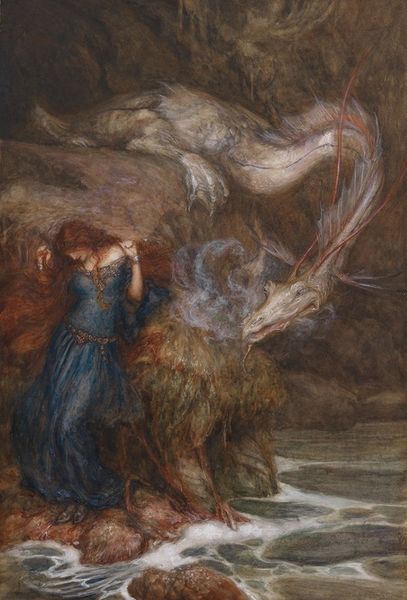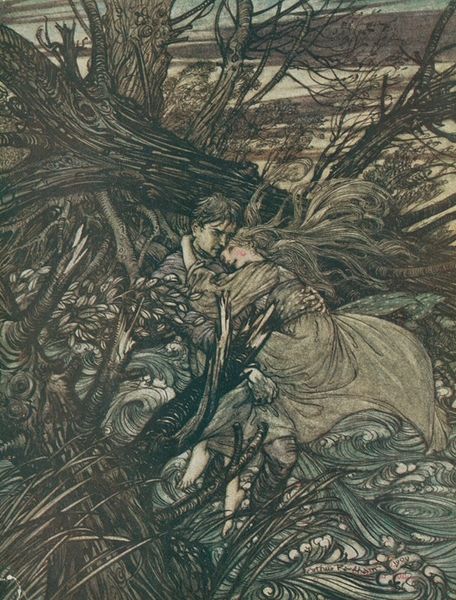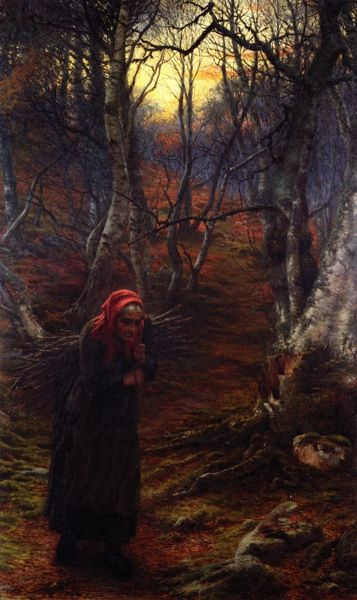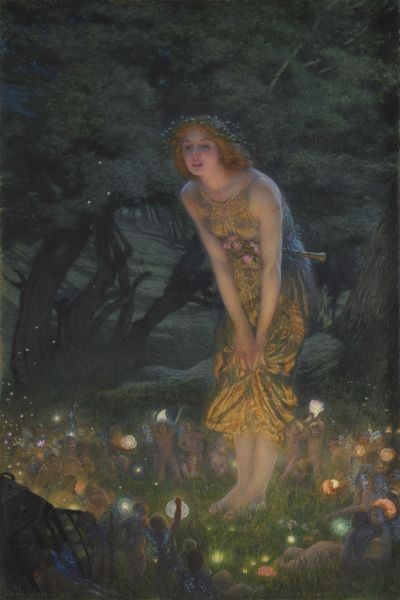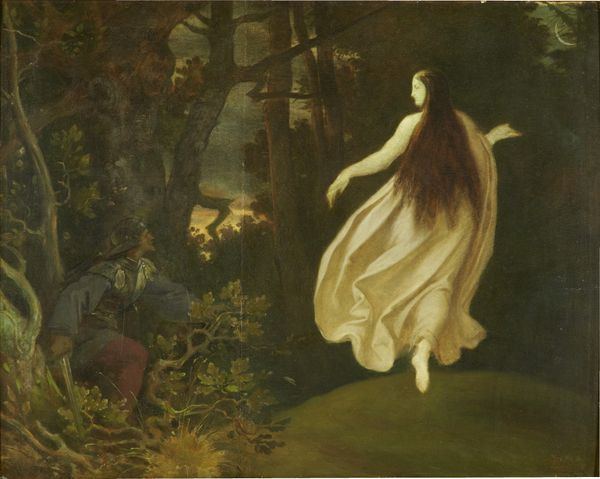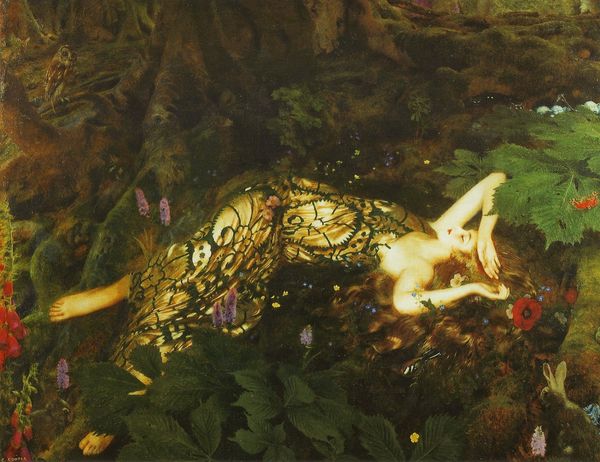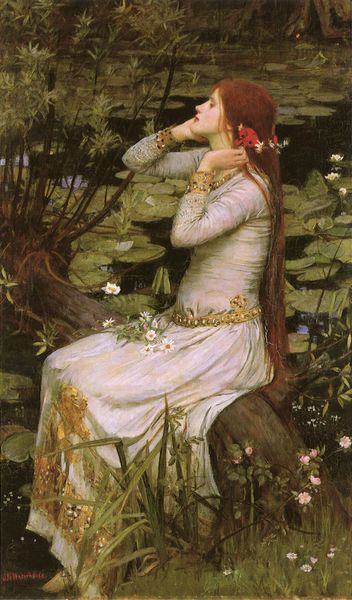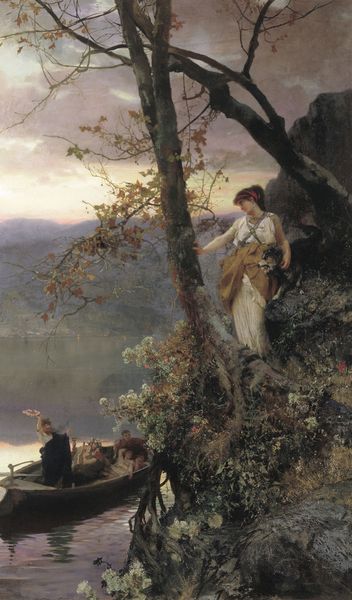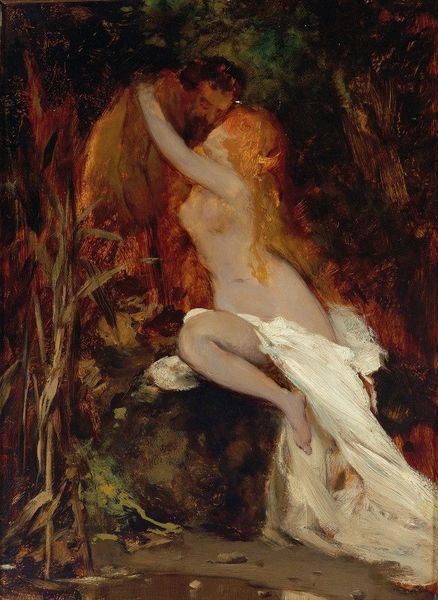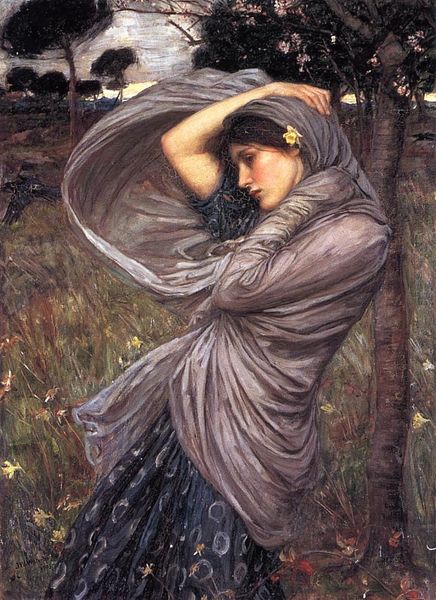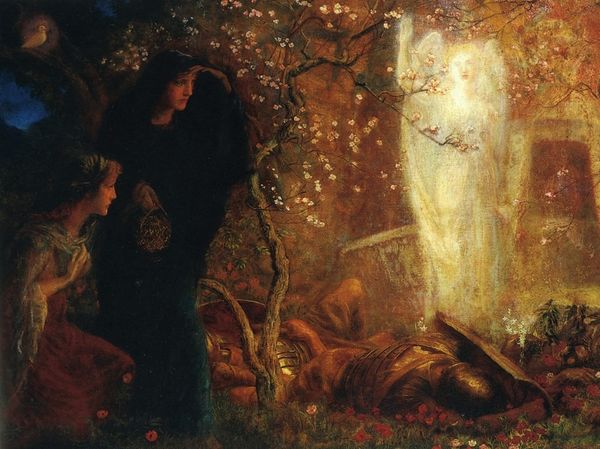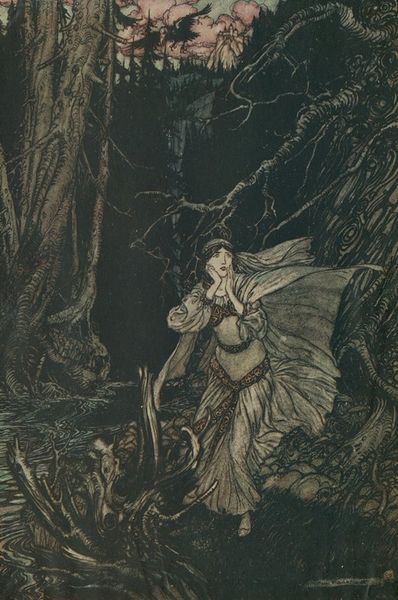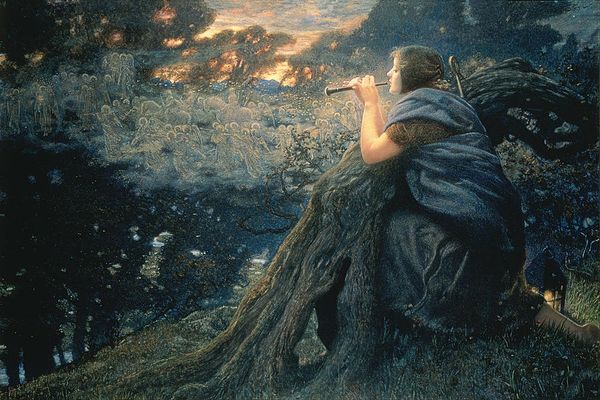
Copyright: Public Domain: Artvee
Editor: This is Arthur Rackham’s "The Haunted Wood," painted in 1913, using watercolor. The tight composition really pulls me in. There's almost a claustrophobic feeling, a real sense of unease. What do you see in this piece, focusing on the way the artist presents the narrative? Curator: Let us observe the strategic use of line and form. The intertwining branches, rendered with exquisite detail, create a complex network that both conceals and reveals. Note how Rackham uses a muted palette, predominantly earth tones, to establish a somber atmosphere. How does this color choice influence your interpretation of the central figure's emotional state? Editor: It amplifies her distress, I think. Her yellow dress stands out, but even that seems muted by the surrounding darkness. So you're saying the colors and the way the branches crisscross are key to understanding the mood? Curator: Precisely. And consider the spatial relationships. The looming crows, dynamically positioned, create a sense of immediate threat. This disrupts any conventional balance and harmony, pushing the viewer to confront an active scene charged with impending doom. Do you notice how Rackham obscures any sense of depth or a clear path for escape, further heightening tension? Editor: I do. It's all so intertwined, making it hard to find any clear direction. I hadn’t noticed how cleverly the placement of the crows emphasizes the compression of space. Curator: By concentrating on the artist's formal solutions to visual narrative, we see a piece reflecting anxieties surrounding unseen danger, as it invites viewers to look for patterns. Editor: This deep dive makes the spatial compression and the colors feel much more deliberate. Thanks! Curator: An exploration of form opens doorways, illuminating Rackham's storytelling skill!
Comments
No comments
Be the first to comment and join the conversation on the ultimate creative platform.
